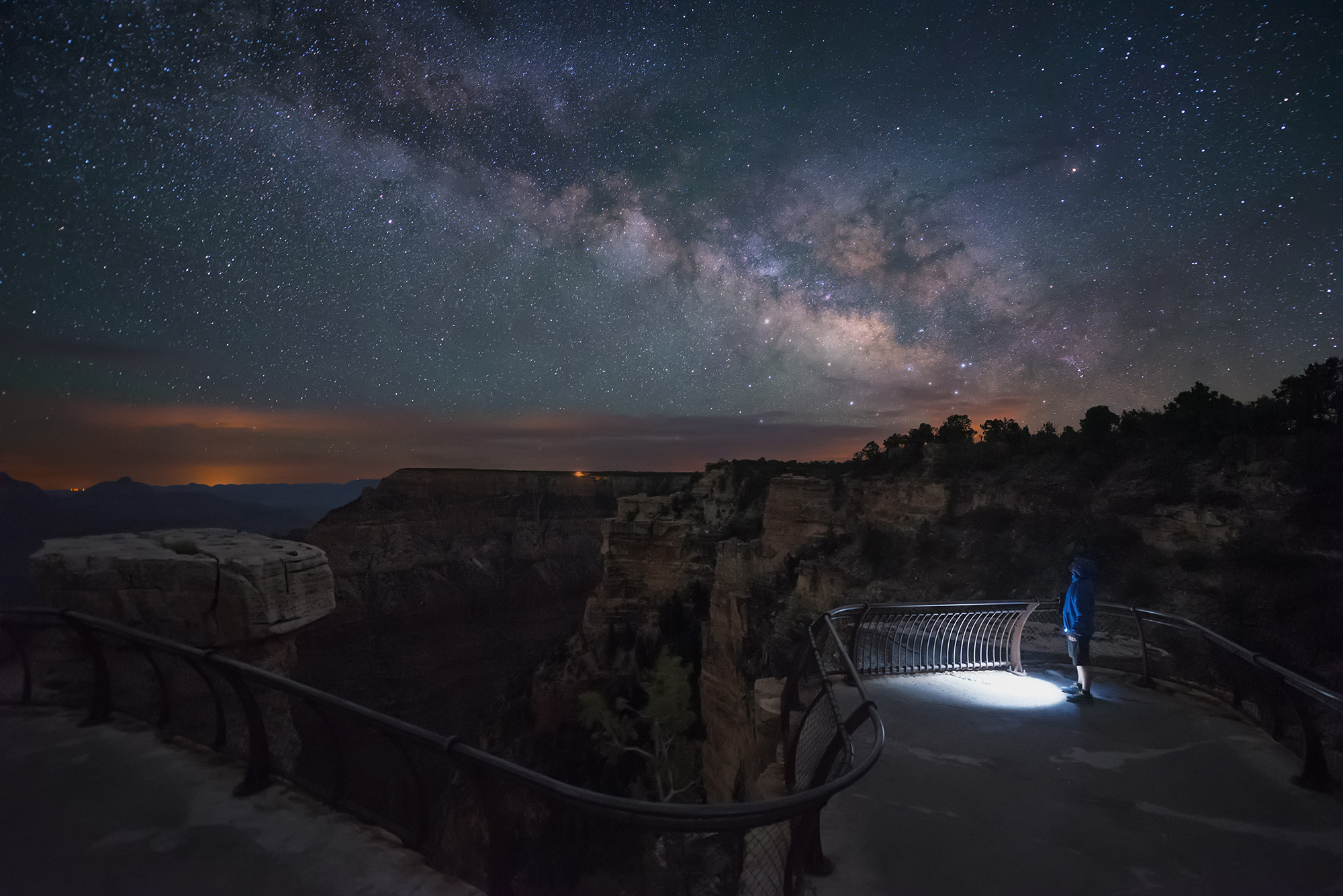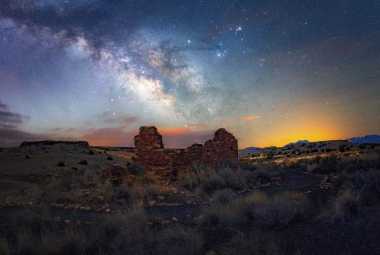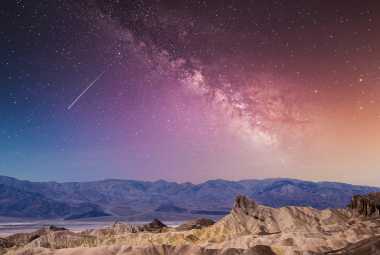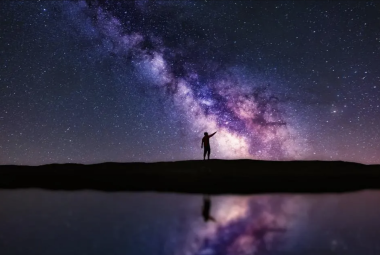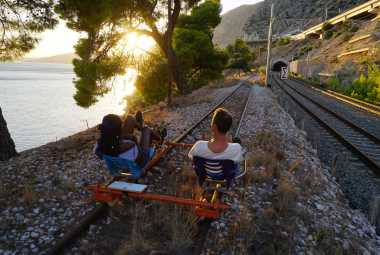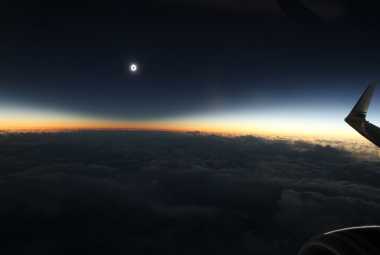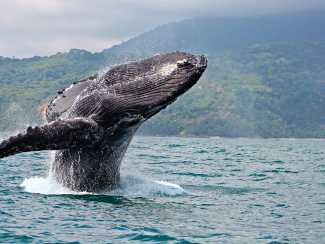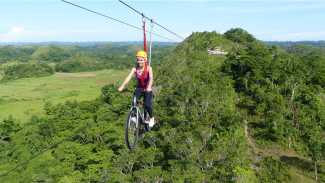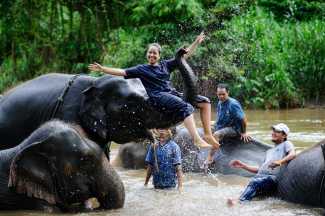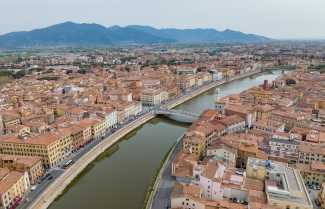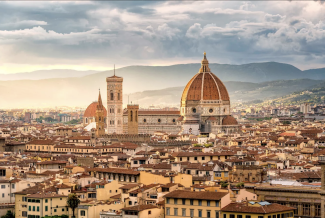Image by BABEK TAFRESHI, NAT GEO IMAGE COLLECTION
*Vacation Mode is a for-profit site. It contains paid banner advertisements that are generated and managed by a third-party network. This site also includes relevant affiliate links (both in the content and on the sidebar) all of which we do our best to clearly mark as such.
Quick Summary
- Grand Canyon National Park is celebrated as a premier dark-sky destination for stargazing, boasting minimal light pollution and protected dark skies that provide spectacular views of constellations, planets, the Milky Way, and meteors.
- The park's commitment to dark sky conservation, endorsed by the International Dark-Sky Association, ensures an unpolluted celestial view, enhancing nocturnal ecosystems and visitor experiences.
- Stargazing programs and events at the park include star parties, ranger-led talks, night photography workshops, and telescope viewing opportunities, enriching visitors' connections with the cosmos.
- Visitors can observe a range of celestial phenomena including radiant constellations, shimmering stars, visible planets like Venus, Mars, Jupiter, and Saturn, and the Milky Way, alongside occasional meteor showers and the Northern Lights.
- For optimal stargazing experiences, it's advised to visit during new moon phases, utilize secluded viewing areas like the Desert View Watchtower or Lipan Point, bring telescopes or binoculars for closer observation, and adhere to safety precautions like carrying flashlights and warm clothing.
- The best times to visit for stargazing vary with seasons, offering different celestial displays such as the Milky Way in summer, Northern Lights in winter, meteor showers in spring, and visible constellations like Orion in autumn.
- Key locations for stargazing within the park include Lipan Point and the North Rim, with recommendations for necessary equipment like night photography gear, telescopes, star charts, or astronomy apps for navigation.
- Safety precautions include following park regulations, carrying essential gear, and being aware of potential hazards like uneven terrain and wildlife.
- Beyond stargazing, the park offers a variety of outdoor activities such as hiking, camping, and river rafting, along with opportunities for wildlife spotting and educational ranger-led programs.
- Planning a trip to Grand Canyon National Park involves considering sustainable tourism practices, engaging in eco-tourism behaviors, exploring diverse accommodation options, and adhering to park regulations for a fulfilling experience.
- The park provides a range of accommodations, from campgrounds to lodges, alongside comprehensive visitor services, ensuring a comfortable stay for visitors interested in stargazing and other park activities.
Looking for a stellar stargazing experience?
Grand Canyon National Park is the perfect dark-sky destination for astronomy enthusiasts. With limited light pollution and protected dark skies, this park offers a stunning view of constellations, the Milky Way, planets, and even meteors.
In this article, we explore what makes Grand Canyon National Park ideal for stargazing, provide tips for enjoying the night sky, cover other activities to enjoy at the park, and offer guidance on planning your trip.
Let's dive in!
What Makes Grand Canyon National Park a Dark-Sky Destination?
Grand Canyon National Park is renowned as a premier dark-sky destination, offering visitors a celestial spectacle with its pristine night sky that showcases mesmerizing constellations, twinkling stars, majestic planets, and the ethereal glow of the Milky Way, making it a paradise for stargazing enthusiasts and astronomy lovers alike.
The park's vast expanse provides an unobstructed view of the heavens, allowing observers to witness meteor showers, lunar eclipses, and even the occasional glimpse of the Aurora Borealis. Away from urban light pollution, the sky at Grand Canyon National Park comes alive with an intensity that captivates all who venture beneath its canopy. Whether one is a seasoned astronomer or simply seeking to marvel at the mysteries of the universe, the park's dark skies offer a profound connection to the cosmos that transcends earthly boundaries.
Limited Light Pollution
The limited light pollution at Grand Canyon National Park is a result of dedicated dark sky conservation efforts and the park's remote location, endorsed by the International Dark-Sky Association, ensuring an unpolluted celestial canvas for stargazers and astronomers to marvel at the wonders of the night sky.
Visitors at the park can witness the breathtaking beauty of the Milky Way and various constellations without the interference of excessive artificial lighting. The park's commitment to minimizing light pollution not only benefits the nocturnal ecosystem but also enhances the overall visitor experience, fostering a deeper connection with nature. By adhering to strict dark sky guidelines set by the International Dark-Sky Association, Grand Canyon National Park serves as a shining example of responsible conservation practices and the preservation of natural nocturnal environments.
Protected Dark Skies
Grand Canyon National Park boasts protected dark skies that are safeguarded by stringent conservation efforts, reflecting the park's commitment to preserving its natural beauty, resources, and environment through strict adherence to park regulations and dedicated environmental protection measures.
The park's dedication to maintaining its dark skies is not only about reducing light pollution but also about creating awareness among visitors and neighboring communities regarding the importance of preserving the natural nighttime environment.
By implementing sustainable practices and promoting responsible recreational activities, Grand Canyon National Park aims to set an example of environmental stewardship for other parks and conservation areas around the world.
Through educational programs, conservation projects, and ongoing monitoring efforts, the park continues to prioritize the protection of its dark skies as a vital component of its overall commitment to sustainable environmental practices.
Stargazing Programs and Events
Grand Canyon National Park offers a diverse array of stargazing programs and events, including captivating star parties, informative ranger-led talks, immersive night photography sessions, and enchanting telescope viewing experiences that allow visitors to deepen their connection with the celestial wonders of the night sky.
Visitors at the park can engage in ranger-led talks that provide valuable insights into the constellations, planets, and galaxies visible in the dark expanse above. These educational sessions not only enhance one's understanding of the universe but also inspire a sense of awe and wonder.
Participants can participate in night photography workshops that teach techniques for capturing the beauty of the starlit sky with stunning precision and creativity. The telescope viewing opportunities offered by the park allow guests to observe celestial objects up close and marvel at the intricate details of distant stars and planets.
Night Sky - Grand Canyon
Video by GrandCanyonNPS
What You Can See in the Dark Skies of Grand Canyon National Park
The dark skies of Grand Canyon National Park offer a mesmerizing celestial display, showcasing a tapestry of radiant constellations, shimmering stars, distant planets, and the luminous beauty of the Milky Way, providing stargazers with a celestial panorama that transcends earthly boundaries.
As night descends upon the canyon, the stars emerge like glittering diamonds scattered across a velvet canvas, their twinkling lights reflecting the ancient mystery of the cosmos.
Venus, the evening star, shines brightly in the western sky, casting its ethereal glow over the rugged landscape. The Milky Way, a river of light stretching across the heavens, weaves a tale of cosmic proportions, whispering secrets of galaxies far beyond our reach.
Observing this celestial ballet, one can't help but feel a profound connection to the vastness of the universe.
Constellations
The night skies of Grand Canyon National Park offer a breathtaking view of celestial constellations, each telling a unique story in the vast expanse of the cosmos, captivating stargazers and astronomy enthusiasts with their intricate patterns and mythological significance.
Many of these constellations have been part of ancient cultures and civilizations, playing a crucial role in shaping their beliefs and traditions. From Orion, the hunter, to Andromeda, the princess, each constellation holds a rich cultural significance and is deeply intertwined with mythological narratives that have been passed down through generations.
The beauty of these star patterns in the velvety night sky adds a touch of magic and wonder to the overall experience, inviting observers to connect with the mysteries of the universe.
Milky Way

The Milky Way, a luminous band of celestial light, graces the night skies of Grand Canyon National Park, offering a stunning subject for astrophotography enthusiasts and a mesmerizing sight for all visitors who gaze upon its cosmic splendor amidst the dark canopy of the night sky.
Its presence in the park not only captivates the eye but also stirs a sense of wonder and awe, reminding us of the vastness and beauty of the universe. The interplay of light and darkness, with millions of stars twinkling alongside the silvery band of the Milky Way, creates a scene straight out of a dream. For astrophotography enthusiasts, the park provides an ideal setting to capture the intricate details and breathtaking beauty of this galactic phenomenon, adding a touch of magic to their photographs.
Planets
Grand Canyon National Park offers a celestial spectacle with the presence of planets that adorn the night sky, creating a dynamic and awe-inspiring tableau that captivates observers with the planetary dance unfolding amidst the celestial canvas above.
Mars, with its distinct reddish hue, stands out prominently against the dark backdrop, inviting contemplation on its significance throughout history.
Jupiter, the largest planet in our solar system, commands attention with its mesmerizing bands and its entourage of moons that can be observed with a telescope.
Saturn, adorned with its iconic rings, never fails to evoke wonder and amazement, serving as a reminder of the beauty and complexity of our universe.
The sight of these planets, along with other celestial wonders, offers a humbling glimpse into the vastness and mysteries of the cosmos, making stargazing at Grand Canyon National Park an unforgettable experience for all astronomy enthusiasts.
Meteors
The night skies of Grand Canyon National Park occasionally host spectacular meteor showers, offering visitors an enthralling display of shooting stars that streak across the heavens, adding an element of celestial magic to the already enchanting night-time panorama.
These meteor showers, caused by the Earth passing through debris left behind by comets, create a mesmerizing show that captivates both amateur stargazers and seasoned astronomers alike. The sight of these bright streaks of light against the dark canvas of the night sky evokes a sense of wonder and awe, reminding us of the vastness and beauty of the universe.
As visitors gather in the park to witness this natural spectacle, there is a palpable sense of excitement and anticipation in the air, as each shooting star leaves a fleeting trail of brilliance before disappearing into the darkness.
Tips for Stargazing at Grand Canyon National Park
To enhance your stargazing experience at Grand Canyon National Park, consider these valuable tips that encompass the best times to visit for optimal celestial viewing, recommended locations for stargazing, essential equipment to bring for an enriching experience, and crucial safety precautions to ensure a memorable and safe night under the stars.
For the best stargazing opportunities, plan your visit during a new moon phase when the skies are at their darkest, offering maximum visibility of stars and constellations. Scout out secluded areas away from artificial lights like the Desert View Watchtower or Lipan Point for unobstructed views. Remember to pack a telescope or binoculars for a closer look at celestial wonders like planets and nebulae. Safety is paramount, so always bring a flashlight, extra batteries, warm clothing, and a first aid kit for unforeseen circumstances during your night sky adventures.
Best Time to Visit
Choosing the best time to visit Grand Canyon National Park for stargazing is crucial, as celestial wonders unfold at different times of the year, offering unique celestial displays that vary with the seasons, ensuring a memorable and enchanting experience under the pristine night sky.
During the summer months, visitors can marvel at the brilliance of the Milky Way sprawling across the vast expanse above, while in the winter, they may be treated to the mesmerizing dance of the Northern Lights. Spring brings opportunities to witness meteor showers painting streaks of light across the darkness, and autumn offers a chance to observe constellations like Orion rising majestically over the horizon. By understanding the seasonal variations in celestial phenomena at the park, enthusiasts can plan their stargazing excursions to coincide with these breathtaking astronomical events.
Best Places to Stargaze

Grand Canyon National Park offers a selection of prime locations for stargazing, including scenic viewpoints that provide unobstructed views of the night sky, secluded areas away from light pollution, and remote spots that offer a serene and immersive stargazing experience amidst the natural beauty of the park.
These stargazing locations at the Grand Canyon National Park not only facilitate awe-inspiring celestial observations but also present an opportunity to witness the magical dance of constellations unfettered by the glow of urban lights. From the iconic Lipan Point, where visitors can marvel at the vast expanse of stars reflected in the Colorado River below, to the tranquil North Rim offering a quieter setting for uninterrupted stargazing sessions, there is no shortage of enchanting spots waiting to be explored under the vast, starry canvas above.
Necessary Equipment
When embarking on a stargazing adventure at Grand Canyon National Park, it is essential to equip yourself with the necessary gear, including cameras for night photography to capture the celestial beauty, telescopes for close-up views of distant wonders, and other tools that enhance your stargazing experience and deepen your connection with the night sky.
Night photography gear plays a crucial role in capturing the enchanting beauty of the night sky, allowing you to immortalize stunning celestial phenomena such as meteor showers and the Milky Way.
Telescopes are indispensable for observing distant stars, planets, and galaxies in all their glory, revealing intricate details that are invisible to the naked eye.
Investing in a quality star chart or astronomy app can help you navigate the cosmos with ease and identify constellations and celestial objects with precision.
Safety Precautions
Prioritizing safety during your stargazing endeavors at Grand Canyon National Park is paramount, necessitating adherence to park safety guidelines, awareness of potential risks associated with night-time activities, and preparation for unforeseen circumstances to ensure a secure and enjoyable experience under the starlit skies.
One of the key park safety regulations to follow is to ensure you have the necessary permits or permissions for nighttime activities. It's crucial to carry essential safety gear such as flashlights, first aid kits, and emergency contact information. Being aware of hazards like uneven terrain, wildlife encounters, and sudden weather changes is vital in mitigating risks. Familiarizing yourself with the park's emergency protocols and communication systems can help in swiftly responding to any unforeseen incidents during your stargazing adventure.
Other Activities to Enjoy at Grand Canyon National Park
In addition to stargazing, Grand Canyon National Park offers a myriad of outdoor activities for visitors to enjoy, including invigorating hikes along breathtaking trails, memorable camping experiences under the starlit sky, and thrilling river rafting adventures that showcase the park's natural beauty and diverse landscapes.
For those seeking to immerse themselves further in nature's wonders, the park beckons with opportunities for birdwatching, wildlife spotting, and picnicking in scenic spots that overlook the majestic canyon.
Hiking enthusiasts can explore a variety of trails, from easy walks suitable for families to challenging paths that lead to panoramic viewpoints.
Camping aficionados can set up tents in designated areas and fall asleep to the soothing sounds of nature.
The park offers educational ranger-led programs and guided tours for a deeper understanding of its history and ecology.
Hiking

Embark on a hiking journey through the majestic terrain of Grand Canyon National Park, where scenic viewpoints, towering geological formations, and diverse ecosystems await, providing an immersive outdoor experience that connects hikers with the park's natural wonders and captivating landscapes.
As you explore the park's intricate network of trails, you'll encounter breathtaking vistas that overlook the vast expanse of the canyon, offering glimpses into its ancient and awe-inspiring creation. The trails wind through rugged terrains, showcasing the park's unique geology with each step. From the colorful rock layers to the winding Colorado River below, every twist and turn on the trails reveal a new facet of the Grand Canyon's natural beauty.
Hikers also have the chance to witness the diverse flora and fauna that call this wilderness their home, adding an enriching ecological dimension to the hiking experience.
Camping
Immerse yourself in the tranquility of Grand Canyon National Park through a memorable camping experience that offers the chance to embrace the serenity of the night sky, the comfort of park accommodations, and the convenience of well-equipped facilities that cater to campers seeking an authentic connection with nature.
At Grand Canyon National Park, campers can choose from a variety of camping options, including traditional tent camping sites, RV hookups, and even cozy cabins for those looking for a bit more comfort.
As the sun sets, the park comes alive with nighttime activities such as ranger-led stargazing sessions, campfire storytelling, and guided night hikes, allowing visitors to fully immerse themselves in the beauty of the night sky.
Park accommodations range from basic campsites with picnic tables and fire pits to more luxurious options with showers, restrooms, and even laundry facilities, ensuring a comfortable stay for all types of campers.
River Rafting
Embark on an exhilarating river rafting expedition along the iconic Colorado River within Grand Canyon National Park, where adrenaline-pumping adventures, close encounters with diverse wildlife, and scenic vistas of the park's geological wonders converge to create a thrilling outdoor escapade that promises unforgettable memories.
As you navigate the rushing waters, the sheer thrill of conquering rapids and maneuvering through twists and turns will have your heart racing with excitement. Keep an eye out for bighorn sheep scaling the rugged cliffs and majestic condors soaring overhead, adding a touch of wilderness to your journey. The stunning panoramas of red rock formations and cascading waterfalls along the river's edge will leave you in awe of nature's grandeur, making every moment on the Colorado River a true adventure in the heart of the wilderness.
How to Plan a Trip to Grand Canyon National Park
Planning a trip to Grand Canyon National Park involves considerations for eco-tourism practices, sustainable tourism initiatives, visitor engagement through informative ranger programs, and accommodation options that cater to a range of preferences, ensuring a well-rounded and enriching travel experience amidst the park's natural splendor.
When exploring the park, visitors are encouraged to engage in sustainable travel behaviors such as minimizing waste, respecting wildlife habitats, and supporting local conservation efforts. Visitor centers serve as valuable hubs for learning about the park's history, geology, and conservation efforts, offering maps, educational exhibits, and guidance on eco-friendly activities.
Ranger-led programs not only provide unique insights into the park's ecosystem but also highlight the importance of protecting and preserving its natural beauty. From rustic campgrounds to eco-lodges, the park offers diverse accommodation choices that cater to different preferences, ensuring a comfortable stay while minimizing environmental impact.
Accommodation Options
Grand Canyon National Park offers diverse accommodation options that cater to the needs of visitors, ranging from cozy park accommodations that provide a close connection to nature, to comprehensive visitor services and park amenities that ensure a comfortable and enjoyable stay amidst the park's breathtaking landscapes.
From rustic campgrounds for those seeking an authentic outdoor experience to luxurious lodges with stunning views, the park boasts a wide range of lodging options. Visitors can choose from cabins nestled in the woods, RV sites for those traveling in recreational vehicles, or historic hotels offering a blend of comfort and history.
In addition to lodging, the park offers various visitor services, including guided tours, dining facilities, gift shops, and educational programs that enrich the overall guest experience.
Transportation
Navigating Grand Canyon National Park is made convenient through various transportation options that ensure park accessibility for visitors, with efficient visitor services and well-maintained park facilities facilitating seamless travel experiences that enable guests to explore the park's wonders with ease and comfort.
Shuttle services within the park offer a convenient way for visitors to reach key attractions, reducing the need for individual vehicle travel and minimizing traffic congestion. Visitor centers provide information on transportation schedules and options, helping guests plan their journeys effectively. Well-marked trails and signage contribute to a stress-free exploration experience, guiding visitors through the park's diverse landscapes. By prioritizing park accessibility and visitor convenience, Grand Canyon National Park aims to create memorable experiences that highlight the beauty and grandeur of this natural wonder.
Entrance Fees and Permits
Understanding the park regulations regarding entrance fees and permits is essential for visitors to Grand Canyon National Park, as these measures support environmental protection efforts, ensure sustainable tourism practices, and contribute to the preservation of the park's natural beauty for future generations to cherish and enjoy.
By adhering to these regulations, visitors play a vital role in safeguarding the delicate ecosystem of the park and minimizing their environmental impact. The fees collected are crucial for maintaining trails, managing waste, and funding conservation projects that aim to protect the diverse flora and fauna found within the park. Permits help regulate visitor numbers in sensitive areas, preventing overcrowding and ensuring a more immersive and authentic experience for everyone who visits.
Frequently Asked Questions
What makes Grand Canyon National Park a dark-sky destination?
Grand Canyon National Park has been designated as an International Dark Sky Park by the International Dark-Sky Association due to its exceptional quality of dark skies. This means that the park has minimal light pollution and provides excellent opportunities for stargazing and experiencing natural darkness.
What kind of activities can I do at Grand Canyon National Park after dark?
Aside from stargazing, there are many activities you can do at Grand Canyon National Park after dark. You can take a guided night hike, attend ranger-led astronomy programs, or participate in a full moon walk. You can also set up a campfire and enjoy the peacefulness of the dark skies.
Are there any regulations for stargazing at Grand Canyon National Park?
Yes, there are regulations in place to protect the dark skies at Grand Canyon National Park. Visitors are asked to use only red lights at night to minimize light pollution. Use of white lights or flashlights is not allowed in certain areas of the park. Also, motorized vehicles and drones are prohibited from being used for stargazing purposes.
What is the best time of year to visit Grand Canyon National Park for stargazing?
The best time of year for stargazing at Grand Canyon National Park is during the summer months, particularly in June and July. This is when the sky is clearer, and there is less chance of cloud cover. However, the park offers stargazing opportunities year-round, so any time is a good time to visit!
Are there any accommodations available for visitors who want to stargaze at Grand Canyon National Park?
Yes, there are plenty of accommodation options at Grand Canyon National Park for visitors who want to stargaze. You can stay at one of the campgrounds within the park, or you can book a lodging at one of the nearby towns. Many of the lodging options offer unobstructed views of the night sky.
What can I expect to see while stargazing at Grand Canyon National Park?
Grand Canyon National Park offers breathtaking views of the night sky, with millions of stars visible on clear nights. You may also be lucky enough to spot the Milky Way and other astronomical phenomena such as shooting stars, meteor showers, and even the occasional northern lights. The lack of light pollution allows for incredible visibility of the stars and constellations.

